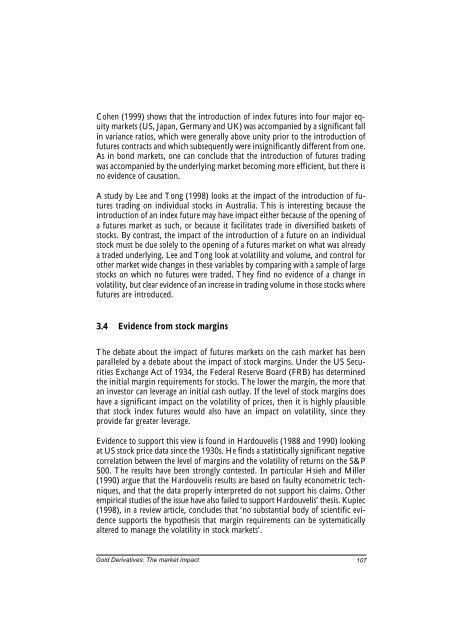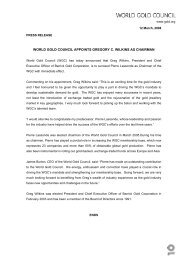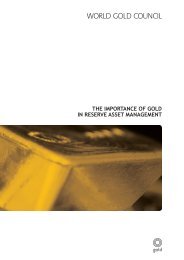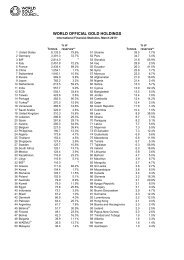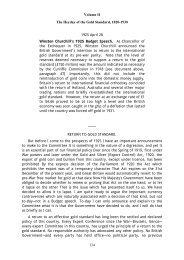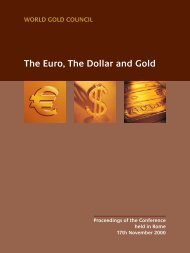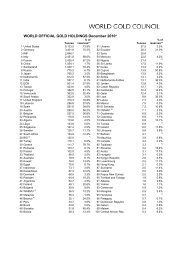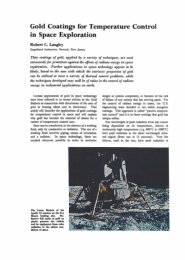Gold Derivatives: Gold Derivatives: - World Gold Council
Gold Derivatives: Gold Derivatives: - World Gold Council
Gold Derivatives: Gold Derivatives: - World Gold Council
Create successful ePaper yourself
Turn your PDF publications into a flip-book with our unique Google optimized e-Paper software.
Cohen (1999) shows that the introduction of index futures into four major equity<br />
markets (US, Japan, Germany and UK) was accompanied by a significant fall<br />
in variance ratios, which were generally above unity prior to the introduction of<br />
futures contracts and which subsequently were insignificantly different from one.<br />
As in bond markets, one can conclude that the introduction of futures trading<br />
was accompanied by the underlying market becoming more efficient, but there is<br />
no evidence of causation.<br />
A study by Lee and Tong (1998) looks at the impact of the introduction of futures<br />
trading on individual stocks in Australia. This is interesting because the<br />
introduction of an index future may have impact either because of the opening of<br />
a futures market as such, or because it facilitates trade in diversified baskets of<br />
stocks. By contrast, the impact of the introduction of a future on an individual<br />
stock must be due solely to the opening of a futures market on what was already<br />
a traded underlying. Lee and Tong look at volatility and volume, and control for<br />
other market wide changes in these variables by comparing with a sample of large<br />
stocks on which no futures were traded. They find no evidence of a change in<br />
volatility, but clear evidence of an increase in trading volume in those stocks where<br />
futures are introduced.<br />
3.4 Evidence from stock margins<br />
The debate about the impact of futures markets on the cash market has been<br />
paralleled by a debate about the impact of stock margins. Under the US Securities<br />
Exchange Act of 1934, the Federal Reserve Board (FRB) has determined<br />
the initial margin requirements for stocks. The lower the margin, the more that<br />
an investor can leverage an initial cash outlay. If the level of stock margins does<br />
have a significant impact on the volatility of prices, then it is highly plausible<br />
that stock index futures would also have an impact on volatility, since they<br />
provide far greater leverage.<br />
Evidence to support this view is found in Hardouvelis (1988 and 1990) looking<br />
at US stock price data since the 1930s. He finds a statistically significant negative<br />
correlation between the level of margins and the volatility of returns on the S&P<br />
500. The results have been strongly contested. In particular Hsieh and Miller<br />
(1990) argue that the Hardouvelis results are based on faulty econometric techniques,<br />
and that the data properly interpreted do not support his claims. Other<br />
empirical studies of the issue have also failed to support Hardouvelis’ thesis. Kupiec<br />
(1998), in a review article, concludes that ‘no substantial body of scientific evidence<br />
supports the hypothesis that margin requirements can be systematically<br />
altered to manage the volatility in stock markets’.<br />
<strong>Gold</strong> <strong>Derivatives</strong>: The market impact 107


